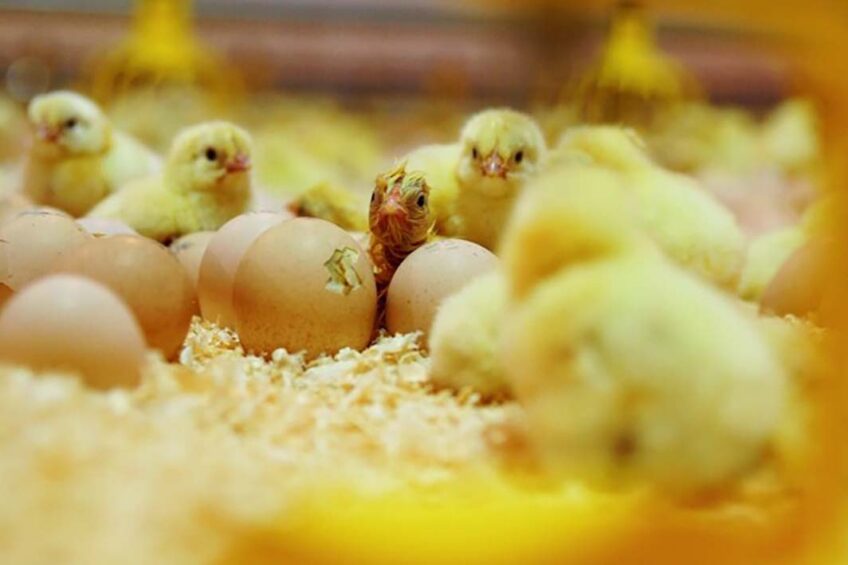On-farm hatching – a growing trend in the US and Canada

Hatching your chicks in your own poultry house rather than having them delivered is a concept that’s popular in Europe and is now gaining some traction in the US and Canada.
European equipment companies, Vencomatic Group and NestBorn, recently entered the North American market. Vencomatic’s X-Treck system has trays placed on a rail system suspended from a range of heights to enable management of airflow and temperature. No walking of the barn to place eggs is required. NestBorn and One2born have trays placed directly on the barn floor. Some farmers also create their own systems.
Canadian in-roads
There are 2 broiler farms in Canada using on-farm hatching systems (Vencomatic), one in New Brunswick and one in Quebec. However, that is expected to grow now that the Canadian Food Inspection Agency is no longer regulating every barn with on-farm hatching systems as a hatchery (which meant each barn needed a hatchery licence).
On-farm hatching is now regulated by the national broiler association, Chicken Farmers of Canada, through its Animal Care Program and On Farm Food Safety Program.
Return on investment
The cost of installing and managing on-farm hatching will be paid for over time in better production parameters. Giving newly-hatched chicks immediate access to feed and water, and sparing them the stress of transport from the hatchery, has been shown to result in better development of the digestive system and dryer manure, which helps prevent footpad lesions. There are also bird welfare benefits in immediate comfort through satiation.
The rate of return on investment also depends on other factors including hatching success rate, prior chick cost and distance from hatchery, as well as degree of automation.
CHEP and CBHEPA news
At the same time on-farm hatching systems are starting to be used in Canada, the Canadian Hatching Egg Producers’ (CHEP) quality assurance program (CHEQ) is celebrating its 20th birthday this year.
Updates to the program include biosecurity clarifications, and changes related to water testing, medication usage and corrective action. The language has also been updated in some instances to reflect technology changes.
Meanwhile, it’s been 22 years since the Canadian Broiler Hatching Egg Producers’ Association (CBHEPA) first offered an annual program for young farmers (39 years of age or less).
The program gives producers the opportunity to tour primary breeder facilities in the US (Aviagen and Cobb) and learn more about the hatching egg industry and broiler breeder management.
However, starting this year, CBHEPA is collaborating with CHEP to offer a new professional development component to the Young Farmers Program, designed to help develop leadership skills.
Join 31,000+ subscribers
Subscribe to our newsletter to stay updated about all the need-to-know content in the poultry sector, three times a week. Beheer
Beheer











 WP Admin
WP Admin  Bewerk bericht
Bewerk bericht